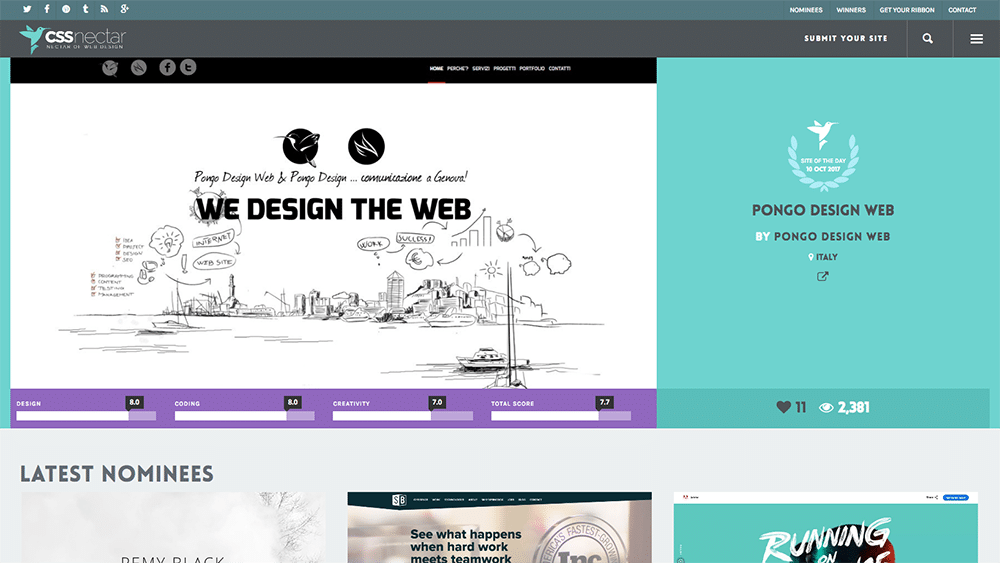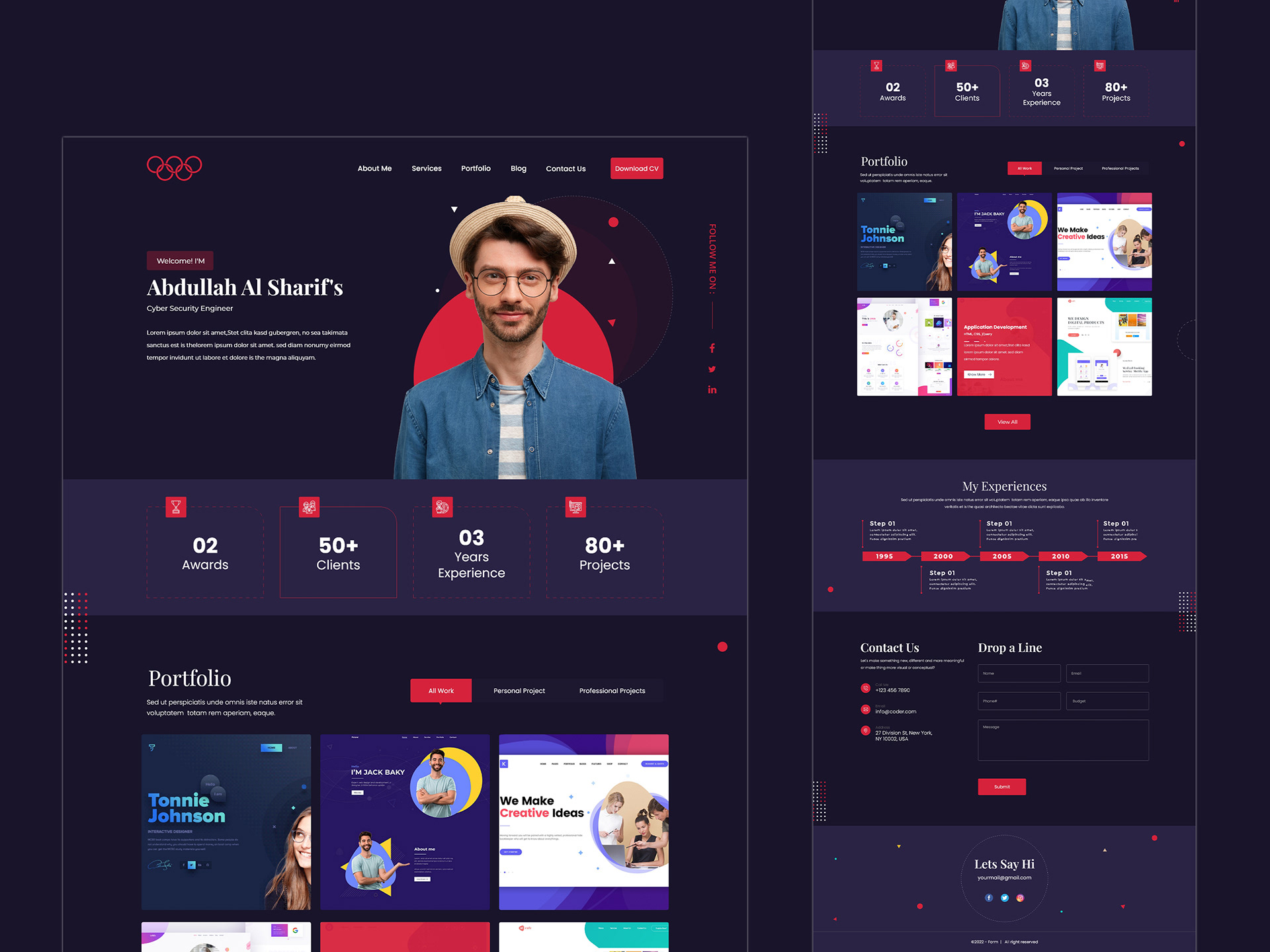Modern Website Design That Captures Focus and Converts
In an increasingly electronic landscape, modern-day website layout has emerged as a pivotal consider catching user focus and driving conversions. By purposefully utilizing aesthetic pecking order, receptive formats, and engaging interactive components, designers can develop experiences that not just attract site visitors but likewise promote purposeful interactions. Efficient call-to-action techniques play a crucial duty in directing individuals towards wanted end results. As we check out these important components, it comes to be clear that comprehending their interaction can dramatically affect an internet site's performance and individual fulfillment. What are the crucial elements that really make a difference?
Importance of Visual Power Structure
Visual pecking order is a crucial component in site layout, as it guides users' focus and boosts their total experience. By strategically arranging material, developers can guide individuals to the most essential details first, therefore boosting interaction and boosting usability.
Integrating a logical circulation in content setup is important; as an example, placing one of the most crucial details on top of a page fosters instant acknowledgment. Regular usage of typography, such as varying font dimensions and designs, aids establish a clear material structure. This organization not just help in navigating but likewise develops trust fund, as users really feel more comfortable when they can quickly discover what they are looking for.
Eventually, a well-executed aesthetic power structure not just improves visual charm but also significantly impacts individual habits. By prioritizing necessary elements and ensuring a seamless experience, designers can efficiently transform site visitors right into clients, strengthening the value of this fundamental layout concept in modern-day internet site development.
Responsive Style for All Gadgets
Creating a seamless experience throughout various devices is important in today's digital landscape, where users gain access to internet sites from smart devices, tablets, and desktop computers alike. Receptive style is a critical technique that makes sure web sites adapt fluidly to different display resolutions, orientations, and dimensions. By using adaptable grids, pictures, and CSS media queries, developers can produce formats that maintain aesthetic stability and functionality, no matter the device being used.
The relevance of responsive layout extends past visual appeals; it straight impacts customer involvement and conversion rates. An internet site that works well on all tools motivates longer gos to and lowers bounce rates, as individuals are most likely to engage with material that is very easy to browse. Search engines, especially Google, focus on mobile-friendly sites in their rankings, making responsive design a crucial part of search engine optimization (SEARCH ENGINE OPTIMIZATION)
Integrating receptive layout not only improves user experience however likewise simplifies the development process. By developing a solitary site that works across gadgets, companies can save time and resources compared to developing different mobile and desktop computer variations. Inevitably, responsive design is an essential method for modern-day internet site layout, guaranteeing access and satisfaction for all users, no matter their device.
Engaging Interactive Elements
While a receptive layout prepares for a useful website, incorporating engaging interactive elements is important for catching individual interest and fostering deeper links. Website Design. Interactive components, such as animations, tests, and clickable infographics, create a more vibrant individual experience, encouraging visitors to invest even more time on the site
Incorporating interactive attributes can also direct users via facility information, making it simpler to digest web content. Interactive sliders can illustrate item variants, while embedded video clips can supply presentations or testimonies that resonate even more than static images or text. In addition, gamification methods, like incentives for involving or finishing tasks with web content, can improve user inspiration and retention.
Reliable usage of interactive components not only enhances the individual experience however can also lead to higher conversion rates. It is necessary to stabilize interactivity with efficiency; extremely complex features may hinder site rate, negatively affecting user satisfaction.
Streamlined Navigating Practices
Effective navigating is a keystone of any kind of effective web site, as it my link straight influences user experience and content accessibility. Streamlined navigation methods guarantee that users can easily situate information, improving their interaction with the site. A well-structured navigating food selection should be intuitive and straightforward, typically featuring a limited variety of main categories to stay clear of overwhelming site visitors.
To accomplish streamlined navigating, designers need to focus on a hierarchical framework that practically organizes content. Applying breadcrumb tracks can supply users with context regarding their current area within the site, permitting smooth backtracking. In addition, using drop-down food selections can successfully save space while still supplying access to subcategories.
Receptive style is important, as navigation must be functional across all gadgets (Website Design). Mobile customers, in specific, benefit from touch-friendly menus and collapsible areas that maintain functionality without compromising visual appeals

Effective Call-to-Action Strategies
A well-crafted call-to-action (CTA) is crucial for directing customers toward wanted results on a website, as it motivates them to involve with material or make a purchase. To optimize their performance, CTAs ought to be clear, engaging, and purposefully positioned throughout the website.
First, utilize action-oriented language that connects necessity or worth, such as "Get going," "Sign up with Now," or "Insurance claim Your Discount rate." This language not just look at this website motivates individuals yet also sets clear expectations concerning the next steps.
2nd, consider design components; CTAs should stick out aesthetically with contrasting shades, adequate whitespace, and prominent positioning. A button that is easy to see and click increases the probability of user interaction.
In addition, personalizing CTAs based upon customer actions or demographics can considerably improve engagement. Customized messages reverberate extra with users, driving higher conversion rates.

Conclusion
These parts collectively enhance individual experience, making certain that visitors stay engaged and encouraged to discover web content further. By focusing on these layout principles, services can substantially enhance user retention and conversion prices, eventually leading to higher success in the digital landscape.
In a significantly digital landscape, contemporary website style has actually emerged as a critical factor in recording customer focus and driving conversions.Aesthetic pecking order is a critical aspect in site design, as it guides customers' interest and boosts their general experience.The significance of responsive layout prolongs past aesthetics; it straight affects customer engagement and conversion prices.Integrating receptive about his design not only boosts user experience yet likewise simplifies the growth procedure. Ultimately, receptive layout is an essential strategy for contemporary web site design, making certain ease of access and satisfaction for all individuals, no matter of their tool.